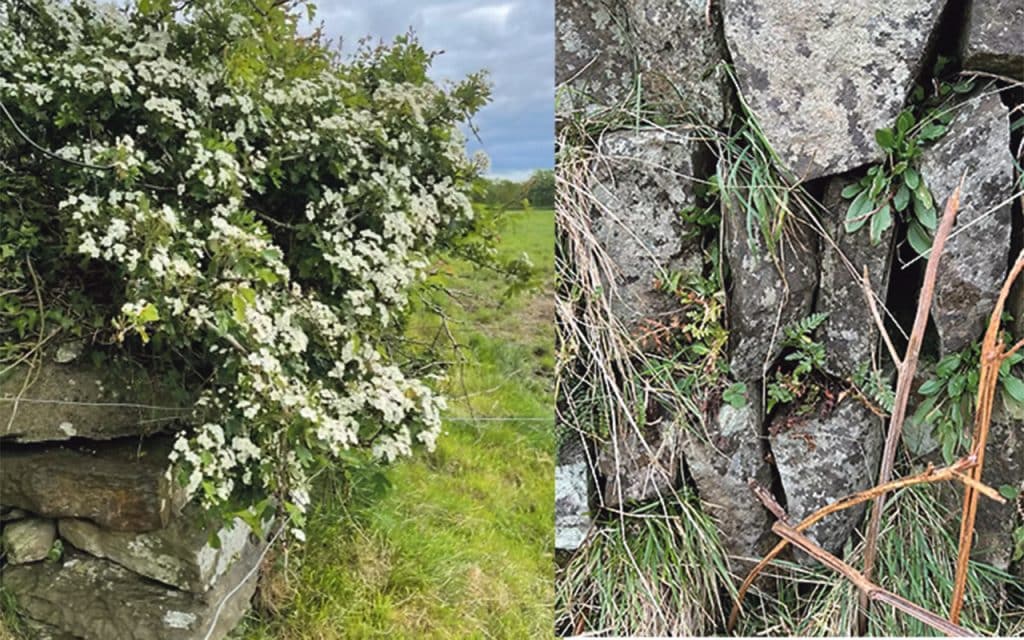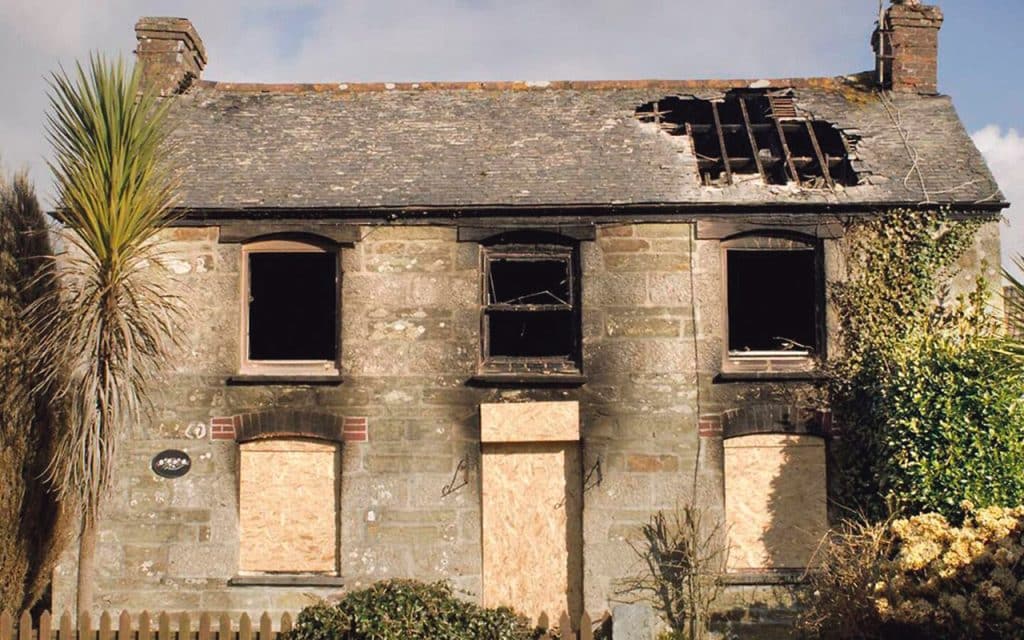
Often when we think of old stone walls in fields, we think of those that are found in the West of Ireland, particularly those found in Connemara. They form an iconic part of the landscape and heritage of the area. Numerous distinct types of stone walls exist around Ireland, with styles varying from one region to another. There are different types of these walls ranging from; stone earthen bank walls, wedged dry stone wall, combination walls, double or single dry-stone wall, to name a few; they can be found dotted throughout our countryside.
Recently UNESCO added the practice of dry-stone walls construction in Ireland to its list of protected cultural heritages. These stone walls are synonymous with Irish landscapes and our culture, some of them dating back thousands of years to the Neolithic period. The longest continuous length of dry-stone wall in Ireland, known as the Mourne Wall, is in County Down and snakes an astonishing path 35km long across the rugged countryside. It passes over 15 summits of the tallest mountains in the region, known as the Mourne Mountain range, including the majestic Slieve Donard – the highest peak in the north of Ireland at 850 metres. The impressive wall is constructed entirely from local granite and took 8 years to complete, with construction beginning in 1904.
The Dry-Stone Wall Association of Ireland (DSWAI) describes a dry-stone wall as “One that has been built using only stone, without the use of any mortar or concrete. A well-built dry-stone wall can be as strong as a mortared stone wall, yet at the same time flexible enough to adapt to its environment. Aesthetically pleasing, they enhance the beauty of the landscape.”
Locally in Murragh, there are stone walls dating back to at least pre-famine times, these walls appear in the First Edition OSI maps. How old these walls are exactly, we don’t know, but they are historically significant. Considering the archaeological findings found within the fields where these stone walls stand, it could mean these walls are thousands of years old. The walls found in Murragh have an abundance of hedgerows on them, in the form of native species, which provide an invaluable habitat for local wildlife. The stone walls appear to be a combination of different styles (from the accompanying pictures you will see the different styles). These stone walls form an integral part of the built heritage of County Cork and support a wide range of wildlife. They provide not only a variation of wildlife habitats but also micro-climates: They have an exposed wet side and a dryer, warmer side perfect for warmth loving insects and basking reptiles; the bottom is sheltered while the top is windswept.
Rough grass strips along the walls are very beneficial for amphibians, reptiles and invertebrates.
Small gaps provide sheltered and damp areas for insects and larger cavities can provide nesting areas for small mammals and song birds.
They are vantage points for insect feeding birds like the stone chat.
Lastly their linear nature is a valuable navigational aid for bats and birds moving through the countryside.
As well as the stone walls, the hedgerows found on them have many values and functions.
Hedgerows can help with flooding control by regulating water movement and thus preventing flooding. Considering the small area of Ireland that is covered by native woodland, hedgerows provide crucial shelter for our wildlife habitat and screening for animals and plant species. With their appearance adding character and visual amenity to an area. The resource of hedgerows in Ireland has sadly declined over the 20th century, due to land management practices. (Teagasc, 2017).
Hedgerows are also invaluable in helping enhance our eco systems, increasing habitat opportunities and forage availability in the form of flowers and fruits for important wildlife groups, such as pollinators and bird species. The provision of hedges on farms can increase the delivery of ecosystem services, both directly and indirectly: directly, hedges and woodland patches can increase the potential for carbon storage in woody biomass, and via the improvement of water infiltration rates to soil, reducing the potential for flooding; indirectly, they can increase the habitat resource availability for essential wildlife, including species that undertake pollination or act as natural controllers of other pest species. (W.Stiles, Aberystwyth University, 2024)
Unfortunately, the historical stone walls of Murragh and their heritage hedgerows are at risk of destruction due to a developer planning to quarry the land in which these walls have stood for hundreds of years. There is approximately 2km of these stone walls that are at threat of being destroyed.
The Cork County Development Plan 2022-2028 section (GI 6-1: Landscape) states to “Discourage proposals necessitating the removal of extensive amounts of trees, hedgerows and historic walls or other distinctive boundary treatments.”
These walls and hedges need to be protected from being destroyed, our local heritage should not be allowed to be wiped out for the profit of a few people.


